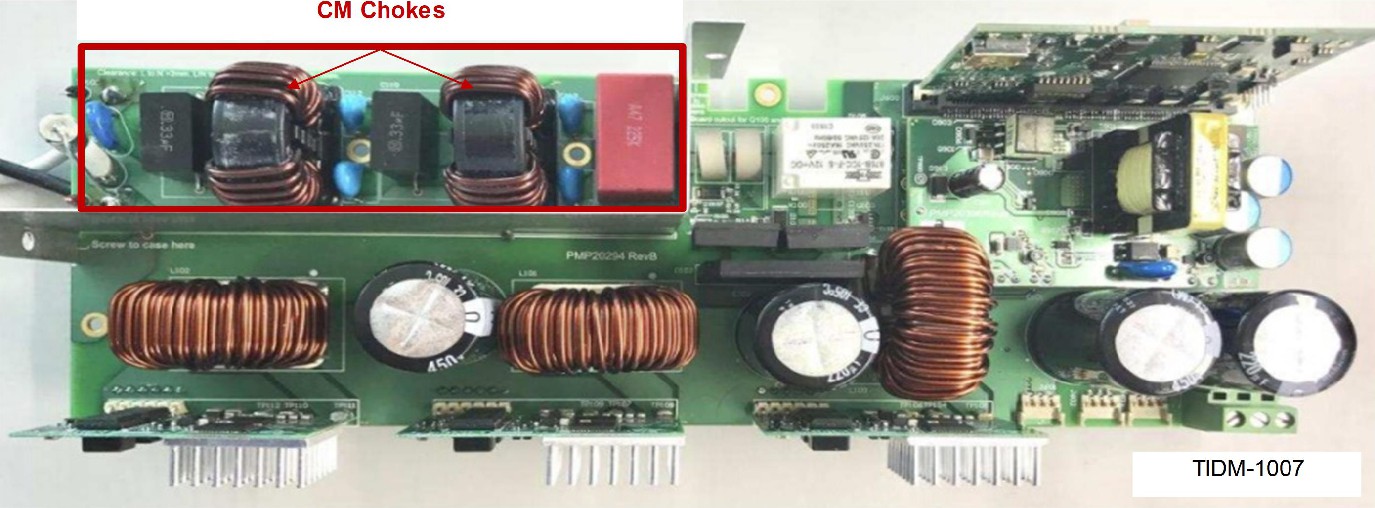SLVAFJ9 March 2023 TPSF12C1 , TPSF12C1-Q1 , TPSF12C3 , TPSF12C3-Q1
- Abstract
- 1 Table of Contents
- Trademarks
- 2 Introduction
- 3 EMI Frequency Ranges
- 4 Passive EMI Filters for High-Power, Grid-Tied Applications
- 5 Active EMI Filters
- 6 Generalized AEF Circuits
- 7 Selection of the CM Active Filter Circuit
- 8 The Concept of Capacitive Amplification
- 9 Practical AEF Implementations
- 10Practical Results
- 11Summary
- 12References
4 Passive EMI Filters for High-Power, Grid-Tied Applications
Complying with EMC regulations intended to limit the levels of conducted emissions requires the insertion of a low-pass EMI filter between a switching regulator and the mains input source. Figure 4-1 illustrates typical filter arrangements for single-phase (three-wire) and three-phase (four-wire) systems in kilowatt-scale, grid-connected applications. L, N and PE refer to live, neutral and protective earth terminals, respectively. Multistage filters as shown provide high rolloff and are common in high-power AC line applications where CM noise is often more challenging to mitigate than differential-mode (DM) noise. Although Figure 4-1 omits components for surge pulse protection and resistive discharge, the schematic does incorporate a line impedance stabilization network (LISN) in series with the input supply to enable measurement of the total EMI, including DM and CM propagation components.
At a higher level, passive EMI filters represent an intuitive, straightforward and traditional approach to mitigate the conducted emissions of a power electronic circuit, even though the size, weight and cost of the passive components cause significant constraints in some applications. Such passive filter designs rely on the insertion of high-impedance series elements (DM inductors, CM chokes) and low-impedance shunt elements (X- and Y-capacitors) to create an impedance mismatch in the EMI current propagation path. The low-order switching harmonics usually dictate the size of the reactive filter components based on the required corner frequency (or multiple corner frequencies in multistage designs).
Taking the single-phase schematic in Figure 4-1 as an example, CM chokes LCM1 and LCM2 and Y-rated capacitors CY1 to CY4 (connected between the AC power lines and earth ground) provide CM attenuation. The CM current sourced from the switching regulator returns first through the regulator-side Y-capacitors and next through the Y-capacitors positioned between the CM chokes. The alternative return path of any remaining CM current is through the measuring impedance of the LISN setup – obviously to the detriment of EMI perforrmance.
As mentioned in the introduction, safety regulations limit the total Y-capacitance to relatively low values (often under 10 nF), and the CM inductance of the chokes required for a desired corner frequency is relatively high, in the range of several millihenries – making the chokes large, heavy and expensive. In contrast for DM attenuation, the X-capacitors CX1 to CX3 can be large-valued (typically 2.2 µF), allowing low-valued DM inductances using the leakage inductance of the CM chokes.
In effect, CM chokes dominate the size of the EMI filter, as illustrated by the practical implementation [3] shown in Figure 4-2, and bring several challenges during EMI filter design – including bulky volume, thermal management issues, acoustic noise, filter resonances and electromagnetic coupling between components. In addition, parasitic elements of the filter components (especially CM chokes) affect high-frequency performance and achievable attenuation. The discrete components used in the filter come in different form factors from various manufacturers and are not optimized to fit well with each other, compromising the spatial design and assembly of the filter implementation.
 Figure 4-2 Conventional Single-Phase
Passive EMI Filter in a Totem-Pole PFC Reference Design
Figure 4-2 Conventional Single-Phase
Passive EMI Filter in a Totem-Pole PFC Reference Design